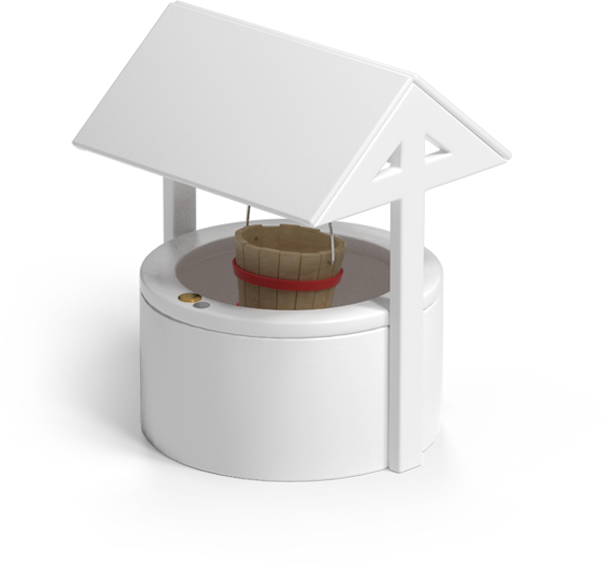SPVs Explained: What Are They And Why Are They Used For Property Investments?
Buying property always involves an element of risk, but that is particularly true if you are a property developer trying to build a property portfolio. Each different project involves different funding, different costs and possibly different structure to how you work and who you work with.
By Jon Howe4/28/21

SPVs Explained: What Are They And Why Are They Used For Property Investments?
Buying property always involves an element of risk, but that is particularly true if you are a property developer trying to build a property portfolio. Each different project involves different funding, different costs and possibly different structure to how you work and who you work with.
This can become quite complex and is a common reason for why an inexperienced property developer might make rash decisions, or become embroiled in debt because they have taken their eye off the ball in the midst of keeping too many in the air.
One common scenario for a property developer is that you have spiralling costs and existing debt, whilst new property opportunities are opening up that you want to get involved in. But you are unable to sell a property just yet to free up the cash required, and lenders looking at your situation are unwilling to lend you the finance because of the liabilities you are carrying.
This could all have an impact on your business if you make the wrong decision at the wrong time.
A popular solution to this is the creation of a special purpose vehicle (SPV), because this is a way in which you can protect your overall business and streamline finances towards an individual project - ie. a new property – whilst limiting the risk to that individual project alone.
What is an SPV?
The name ‘special purpose vehicle’ is a very literal description of an SPV, because it is a subsidiary company that is created to carry out a specific project, but whilst it is a legal entity, it is not a physical entity, as it exists only as a vehicle used for a special purpose and to achieve your goals.
In relation to property development, your existing business could set up an SPV in order to complete the development of a new property, or set of properties. This is done to isolate the financial risk and limit it to that SPV, as the SPV has its own legal status.
The SPV will have a separate legal status to your existing business and hence its financial activities are not shown on your overall business’s balance sheet. Indeed, the SPV will also have its own balance sheet.
There are many advantages to creating an SPV and many justifications, and one of them is to ensure the SPV is secure even if the overall business goes bankrupt. This might be a stipulation of a partner you are working with on a particular development, but it works both ways.
You might be working on a development with a new partner, but you want to protect your business from the risk of that particular project failing. Creating an SPV will enable you to do that, so it protects all the parties involved in the project.
How does an SPV work?
SPVs can be created for many different areas of the business sector, but in terms of property, the operations of an SPV are limited to the acquisition and financing of a specific asset, in this case property.
The business arrangement that an SPV represents can be in any form. It could cover a limited company, a partnership, a trust, a joint venture or it could even be set up by a sole trader working on their own.
An SPV can have totally independent ownership, management and funding and it is quite likely that no two SPVs are ever the same, their structure is entirely up to the parties involved in them. A limited company is perhaps the most popular legal structure for a business forming an SPV, as many buy-to-let developers prefer this method of operating because they don’t have to pay income tax as an individual if they form a limited company, instead they pay corporation tax as a business.
As we touched on earlier, the financial activities of an SPV don’t appear on the balance sheet of the parent company as either equity or debt, and the assets, liabilities and equity are recorded on a balance sheet specific to that SPV.
This enables the SPV to operate as a separate legal entity, and the creation of this SPV is effectively stating that a separate legal entity has been created for a specific purpose. But the misunderstanding often comes in that the SPV is not actually a physical entity, it is covering the ‘purpose’, ie. the project of purchasing and developing a property.
Why are SPVs used by property developers?
There are many different ways that you can be successful as a property developer, and the more experienced you are, the better you become at making judgements. But some common denominators will always exist, and they are the need to secure finance for a project and the element of risk that will always be present.
The key of course is managing that risk, and ideally reducing it. But SPVs exist as a way of helping to secure finance, whilst at the same time controlling the risk involved.
Property developers can use an SPV to undertake a risky venture, because it can reduce the negative impact this might have on their parent company should the project fail. But in reality, an SPV is a common sense method for managing a property project even if the risk is relatively minimal. It protects all parties primarily, but it also makes it a little easier to secure funding from a financial institution.
The creation of an SPV for a property development project enables a lender to assess the risks of this project in isolation. The SPV is a new business with no financial baggage, no financial history, no debts or liabilities and no outstanding legal cases, so immediately it represents a more attractive proposition to a lender.
A bank will always be more wary of a trading company approaching them for funding when they have existing liabilities, and so an SPV avoids this by managing the project in isolation.
All that said, whilst creating an SPV is a feasible way to manage a project for any business structure, most sole traders will avoid it if they are building a property portfolio on their own. If all the properties are in your name it makes more sense to keep them all in one entity, ie. your parent company. However, if you are doing multiple deals on multiple properties with multiple partners, an SPV makes more sense as you can ring-fence each deal and manage the finances easier.
How would a property developer use an SPV?
As we have explained, there are many different ways that a property developer can use an SPV, based on the structure of their business, and how they are planning for a new project. A typical process for using an SPV, however, would be as follows:
- You have a number of existing properties in your portfolio but have seen a new property and have been approached by a new partner. You agree to work together to develop this property.
- Your partner is providing all the capital and you are providing all the labour and management time, but you still need further finance to fund the project.
- The two parties agree to form a joint venture and an SPV is created to cover this project because there is new capital, new shares and new directors involved.
- You agree on a percentage split of the proceeds of the project, which could be 50/50 or 60/40 or anything that fairly represents the contribution of each partner. This could be documented in a joint venture agreement or you could even form a limited company, but either way, the equity agreement is documented along with responsibility for debt and defined roles.
- You approach a lender who sees your business structure and your SPV and therefore sees that there are no existing debts or liabilities, and subsequently agrees to fund the project as necessary.
- The project is successfully completed, funding is repaid to the lender and the proceeds are shared between the partners as previously defined.
- The partners can then decide whether to keep the SPV up and running or close it down and move on. In most cases the SPV will be disbanded as a legal entity at the end of a project, because it has fulfilled its purpose and, effectively, if you continue using it for another project its benefits become diluted, i.e. there will be financial history and potential baggage which might put off a lender. It makes more sense to start a new SPV, even if you are working again with the same partner.
SPVs have also become popular with property crowdfunding. In this situation, individual investors put money into a project and the shares they subsequently own in a property are actually shares in an SPV. This has become a major attraction of SPVs and hence property crowdfunding, as the risk is limited only to the percentage share you invest.
What else should I know about SPVs?
SPVs are very easy to set-up, but perhaps the biggest consideration is the business structure you choose to cover with an SPV. There are tax implications to which entity you choose, ie. a limited company, a joint venture or any other legal structure, and there are also different levels of risk. So it would be advisable to get financial and legal advice when partnering with someone on a property development project.
You will be able to get specialist advice on your specific situation, and which is tailored to your personal circumstances. This is the best way to proceed when assessing the viability of a new property development project. But certainly, an SPV can be adapted to any business structure and is consistent in providing security from the risk involved in a project. Being able to limit your liability to the investment you have put into one specific project, could be critical to a developer looking to expand their property portfolio, and this is why SPVs are very popular and a commonly-used vehicle for successful property developers.
Take a look at our other articles




